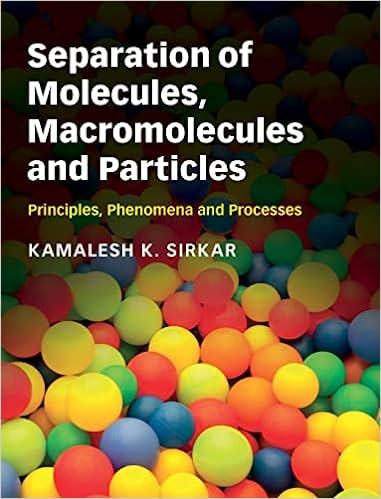Answered step by step
Verified Expert Solution
Question
1 Approved Answer
A 1 - 2 shell - and - tube heat exchanger is used to cool condensed steam at a rate of 1 0 5 kg
A shellandtube heat exchanger is used to cool condensed steam at a rate of kgh from cdeg to cdeg using cooling water available at cdeg The operating conditions do not permit exit temperatures of cooling water exceeding circC Select a counter flow heat exchanger with inch OD tube, BWG triangular pitch and feet long tube arrangement with a tube thickness of inch. By referring to the data sheet and with suitable assumptions, Evaluate the following:
i Mass flow rate of water;
ii Corrected LMTD
iii Total number of tubes;
iv Tube side Reynolds number;
v Inside heat transfer coefficient;
vi Shell side Reynolds number
vii Shell side heat transfer coefficient;
viii Overall heat transfer coefficient;
ix Inside heat transfer area
x Actual heat transfer area
xi Actual design overall heat transfer coefficient
For the missing data or datasheet make assumptions for it here is my assumption
The specific heat capacity of water is kJkgK
The thermal conductivity of the tube material is WmK assuming stainless steel
The viscosity of water at the average temperature is kgms
The density of water at the average temperature is kgm
The Prandtl number of water at the average temperature is
Given data:
Mass flow rate of condensed steam: kgh
Inlet temperature of condensed steam: deg C
Outlet temperature of condensed steam: deg C
Inlet temperature of cooling water: deg C
Maximum outlet temperature of cooling water: deg C
Tube outer diameter: inch m
Tube thickness: inch m
Tube length: feet m
Tube pitch: triangular
Check if my assumptions suitable and solve according to that
Step by Step Solution
There are 3 Steps involved in it
Step: 1

Get Instant Access to Expert-Tailored Solutions
See step-by-step solutions with expert insights and AI powered tools for academic success
Step: 2

Step: 3

Ace Your Homework with AI
Get the answers you need in no time with our AI-driven, step-by-step assistance
Get Started


